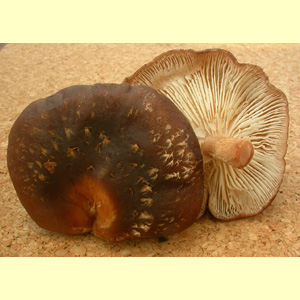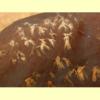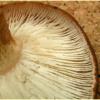



Species delimitation within L. edodes sens. lat. is complex. Molecular studies have demonstrated that wild Australian isolates belong solely to one of five independent lineages of L. edodes sens. lat. (Hibbett et al., 1998). These lineages are not reproductively isolated (Petersen 1995), but occupy more or less discrete geographic ranges, with some morphological differentiation (Hibbett et al., 1995; 1998). The type specimen of L. lateritia is from Australia and belongs to the L. edodes group, and so it is appropriate to place Australian material under L. lateritia. Records of L. edodes from Australia apply the name in a broad sense, and there is no evidence that L. edodes sens. strict. is found naturally in Australia, except in cultivation or as an escape from cultivation.
Cultivated strains of Lentinula edodes are becoming naturalised in the Narrogin district of W.A. (Neale Bougher, pers. comm.).
Hibbett, D.S., Hansen, K. & Donoghue, M.J. (1998), Phylogeny and biogeography of Lentinula inferred from an expanded rDNA dataset, Mycol. Res. 102: 1041–1049.
Hood, I.A. (2003), An Introduction to Fungi on Wood in Queensland. University of New England, School of Environmental Sciences and Natural Resources Management, Armidale. [Description, Illustration and B&W Illustration of L. lateritia]
Pegler, D.N. (1983a), The genus Lentinula (Tricholomataceae tribe Collybieae), Sydowia 36: 227–239. [Description, B&W Illustration and Microcharacters of L. lateritia]
Pegler, D.N. (1983b), The genus Lentinus: a world monograph, Kew Bull., Addit. Ser. 10: 1–281. [B&W Illustration and Microcharacters of L. lateritia]
Petersen, R.H. (1995), Contributions of mating studies to mushroom systematics, Canad. J. Bot. 73 (Suppl. 1): S831–S842.
